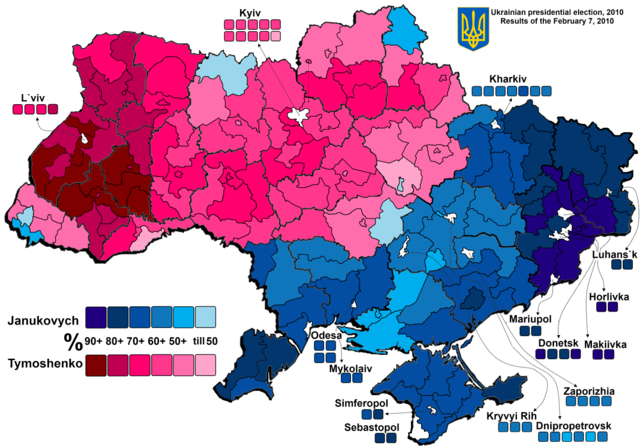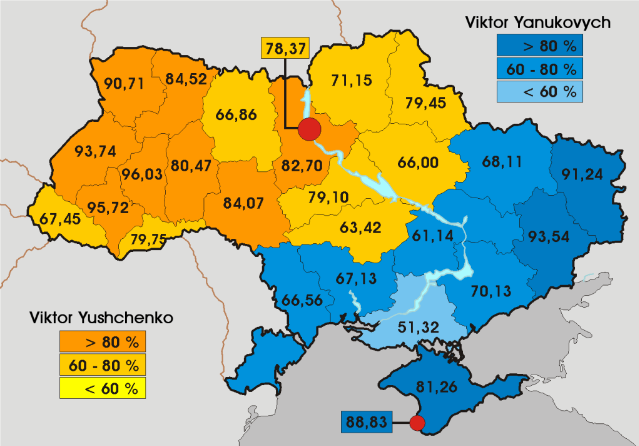Ukraine as a defined territorial entity only came into existence in 1917
This is not true.
Ukraine as a defined territorial entity came into existence in 1590 when this name was for the first time used in an act of Parliament.
From that point on this name was used many times and it denoted a defined territorial entity - for example in a map made by Polish cartographer Tomasz Makowski in 1613 and in a map titled "Delineatio Generalis Camporum Desertorum vulgo Ukraina" made by French cartographer William Beauplan in 1648, as well as in another map of the same cartographer in 1651, in which Beauplan defined Ukraine as territory between the Dnieper River and the Southern Bug River.
Finally, in 1658 the Treaty of Hadiach proposed to transform the Commonwealth of Both Nations into the Commonwealth of Three Nations consisting of three legal entities, thanks to creation of the Ruthenian Duchy in lands defined as Ukraine (Kiev Voivodeship, Bratslav Voivodeship and Chernihiv Voivodeship).
So your claim that Ukraine as a defined territorial entity came into existed only in 1917 is far from the truth.
My map shows the borders of Ukraine as defined in the Treaty of Hadiach in 1658.
However, the understanding of what area constituted the borders of Ukraine was similar throughout the entire 17th century. Initially - in 1590 - Ukraine encompassed areas of Kiev Voivodeship and Bratslav Voivodeship. In 1635 as the result of the Treaty of Polyanovka (1634) the Czernihiv Voivodeship was created from part of lands ceded to Poland by Russia in 1634 and that Voivodeship was also incorporated to territorial entity defined as Ukraine.
Certainly none of the lands which belonged to the Kingdom of Poland already before 1569 (since the 14th century) were considered as Ukraine.
In other words - the regions of Eastern Galicia, Volhynia and Podolia were never considered as parts of Ukraine.
=============================
Something about William Beauplan (in English):
http://mapy.muzeum-polskie.org/articles-about-the-collection/works-by-wilhem-de-beauplan.html
=============================
Another 17th century map of Ukraine was that by Vincenzo Maria Coronelli from 1690.
At that time Ukraine was already politically divided - one part was in Poland, the other part was in Russia. Coronelli called the Polish part of Ukraine "Vkraine ou Pays des Cosaques" and the Russian part "Okraina". In Coronelli's map Ukraine is limited from the south-west either by Southern Bug River (or by Dniester), from the north-west by Horyn River and from the north by Pripyat River. The Dnieper River divided Polish part of Ukraine from Russian part of Ukraine at that time.
Western Ukraine (within red borders) as defined by Coronelli in 1690 compared to modern Ukraine (black borders):
Original map of Coronelli from 1690:
Anyway, the map is showing the borders of Ruthenia, a region of the Rzeczpospolita
Not it is not.
It is showing proposed borders of the Ruthenian Duchy, which was to be located within the real borders of Ukraine, a region of Rzeczpospolita. That Ruthenian Duchy - a political entity, not a territorial entity (unlike the region of Ukraine, within which that political entity was supposed to be located) never came into existence, because provisions of the Treaty of Hadiach were annihilated by Russian intervention and Ukraine entered a historical period called "The Ruin":
http://en.wikipedia.org/wiki/The_Ruin_(Ukrainian_history)
In the article above we can see the borders of Ukraine in the 18th century - Right Bank Ukraine map and Left Bank Ukraine map:
Compared to Right Bank (Western) Ukraine according to Coronelli in 1690:
Both maps combined show the borders of Ukraine in the 18th century:
Not much change compared to borders of Ukraine in 1658 (red lines):














